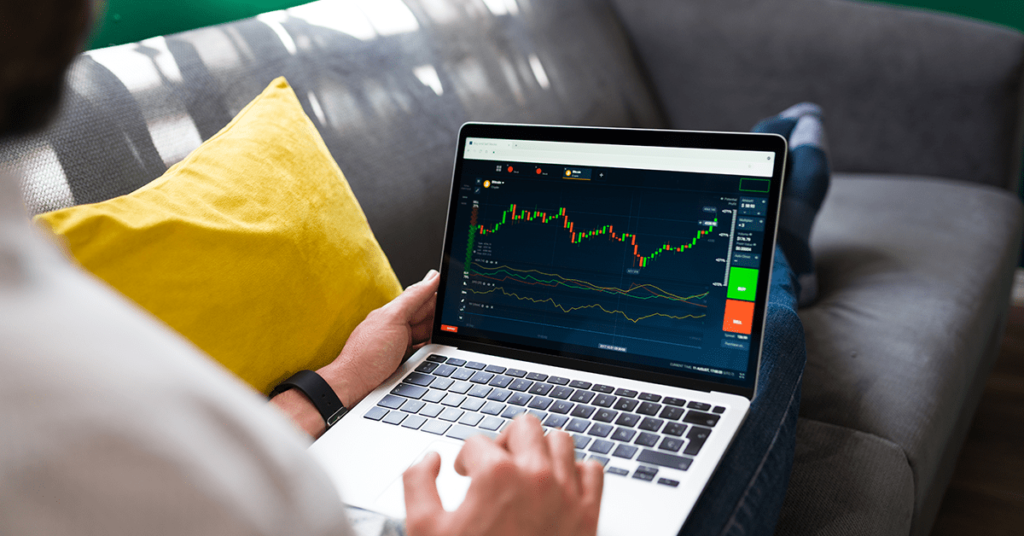Trading as an investing technique has gained greater attention over the last few years and is now widely used throughout the world. Numerous new trading styles have resulted from this, but the two we’ll be looking at today are algorithmic and automated trading.
Among the most well-known trading techniques are algorithmic trading, also known as “algo trading,” copy trading, and automated trading, sometimes known as “auto trading bots.” Even if the public has a similar perception of them, they are very distinct from one another. This article will clarify the differences between algorithmic trading and automated trading as well as their similarities.
Algorithmic trading
There are other models that are produced by adhering to clear-cut formulas and principles. To choose entry and departure points, follow the guidelines established by these models. Algo trading does not allow for the use of human emotion in its trading and instead depends on computer programming and financial markets. Also much depends on microstructure research, liquidity dynamics and other factors that should be taken into account using algorithmic trading. One of good examples is the expertise of Betterhand Financial Technologies – BHFT – Expertise | Our Custom Trading Algorithmic Strategies.
Algo trading, automated trading, and black-box trading are a few of the titles used to describe algorithmic trading. Algorithms are used to execute trades in this manner, as the name would imply. In order to set instructions during transactions, these algorithms use pre-programmed factors, including time, price, and volume. As a result of orders being too large to be placed all at once, these instructions place orders in little pieces. Bit-by-bit orders are sent to help with aggressive trading as well as to help obtain a fair price at a specific moment.
Algo trading, as opposed to manual trading, enables trading at the most advantageous pricing. This is due to the fact that trades are executed with greater efficiency, accuracy, and precision, and transactions are completed at a substantially higher pace. Most notably, traders no longer need to execute deals or be present physically; they may focus on other tasks instead of constantly monitoring the market.
The main drawback of this trading strategy is that the trader cedes control of their account to someone else. Even though human attention is greatly diminished, it is still necessary to check frequently to make sure everything is going according to plan. This includes checking that your internet connectivity wasn’t problematic, as it might have disturbed and halted the software.
Automated trading
Another name for this is robotic trading or expert advisors (EA). Automated software running on a system is used to execute transactions in automated trading. The parameters that were used to create the software are used to execute these trades. Automated trading used to require both programming expertise and knowledge of how to trade, but the procedure has now been made simpler.
A strategy that can be turned into programmed rules is the foundation of auto trading. The programme gets less effective as this method becomes more complicated. The trader can choose the order type, the timing, and the triggers for the order, or they can utilize the software’s default settings.
Automated trading makes it easier to manage one’s emotions during trading. Before automating the software and risking your money, you can test your idea on historical data. Additionally, since you must stick to the plan, trading requires discipline.
Similar to algorithmic trading, automated trading’s one shared characteristic is that it is entirely dependent on technology. As a result, any disruption in the software, connectivity, or hardware can impair the entire trading process, frequently necessitating human intervention to re-deploy the software.
Additionally, suppose a trader finds that a specific strategy is ineffective or has to be modified. In that case, they must pause trading while they make the necessary changes, if permitted, and then re-deploy the programme.
For instance, if the user wants to switch from automatically buying when the RSI reaches 20 to 15, they will have to suspend trading, make the necessary changes, and then restart the process.
Algo trading and auto trading have certain similarities
Trading that is automated and algorithmic has a lot in common. Both of them require programming to operate, along with a few pre-programmed variables. Both of these initiatives outline specific guidelines that the industry must abide by.
Additionally, they have similar advantages in common. Both of their aid in putting emotions aside when trading, aid in trading at the best prices, and, when properly designed, aid in generating income. Following the established criteria, they carry out trades with such high accuracy and precision that there is no room for human error. Additionally, because the trader is not required to sit with the deal, they do not demand their whole concentration.
Despite being technically sophisticated, both of their methods have been simplified through time.
Algo trading and auto trading's primary differences
In contrast to auto trade, when everything is predetermined and automated, algo trading is algorithmic; it reads the data and makes decisions. High-frequency trading, or making transactions instantly, is related to algorithmic trading. Due to their ability to profit from even the smallest price differential, traders have an advantage when using particular tactics like arbitrage trading.
Simple techniques that can be programmed into orders are needed for automated trading, and bit-by-bit orders that can replace large orders are needed for algorithmic trading.
Automated trading takes place automatically; utilizing programmed software, decisions to purchase and sell are made automatically. From beginning to end, the trading procedure is entirely automated. Algorithmic trading, however, is utilized when trading in high numbers to speed up the process and lower transaction costs. To put it another way, algo trading is used when the algorithms used are capable of predicting when to enter and quit a transaction.
Takeaway
In conclusion, the use of software and programmed codes for trading is increasing, and understanding the differences between the two most common approaches will undoubtedly be helpful for anyone who sees themselves participating in this market in the future.
Although there are some parallels and distinctions between algos and auto trading, both are ultimately tools for traders. You can select the approach that works best for you and your objectives, but in every situation, doing your homework, exercising caution, and taking your time to decide are always good moves.
Also, after you have chosen a strategy, you shouldn’t feel obligated to stick with it.

